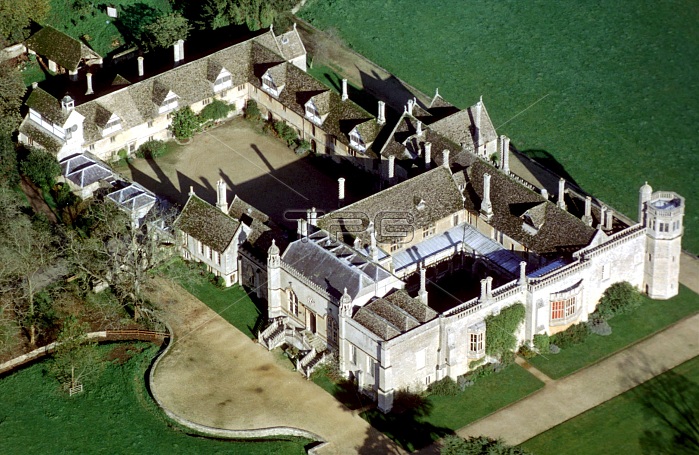
Lacock Abbey in Wiltshire from the air - Lacock Abbey today shows four architectural styles which combine to give the whole building a fine romantic beauty. The Abbey was founded in 1232 and was used as an Augustinian nunnery until 1539 and the Dissolution of the Monasteries by Henry VIII. Parts of the nunnery, including the cloisters, chapter house and sacristy, were preserved when the building was converted into a private residence in 1550. The owner, Sir William Sharington, had travelled in Italy and he introduced the new Italian architecture to Tudor England. Sir William died childless in 1553 and the abbey was inherited by his niece Mrs John Talbot. In 1754 John Ivory Talbot employed the architect Sanderson Miller to make alterations to the house in the Gothic revival style. In 1828 further changes were made to the building. The most famous member of the Talbot family was William Henry Fox Talbot who invented the photographic negative at Lacock Abbey. The subject of Fox Talbot's earliest negative of 1835 was an oriel window in the south gallery. There is a Museum of Photography in the gatehouse which includes displays Fox Talbot's experiments. The house remained in the hands of the Talbot family until 1944 when it was given to the National Trust, together with nearly all of neighbouring Lacock village. The Abbey is also famous for its display of snowdrops which cover the grounds in the spring. - ?TopFoto / Woodmansterne
| px | px | dpi | = | cm | x | cm | = | MB |
Details
Creative#:
TOP18453170
Source:
達志影像
Authorization Type:
RM
Release Information:
須由TPG 完整授權
Model Release:
No
Property Release:
No
Right to Privacy:
No
Same folder images:

 Loading
Loading